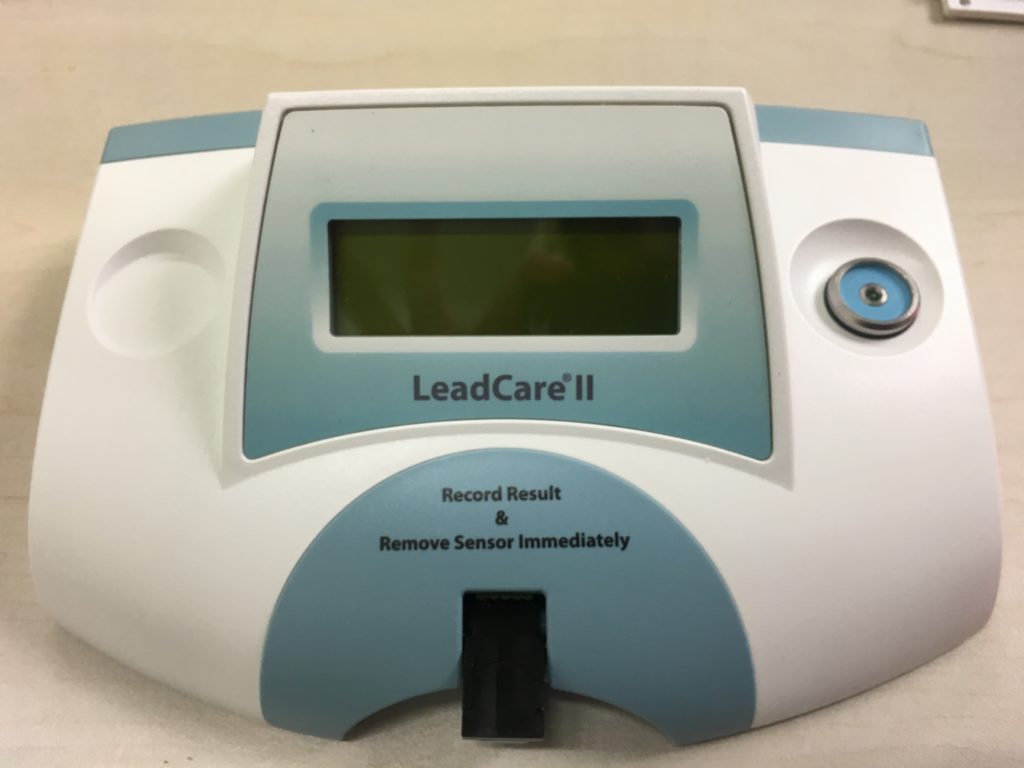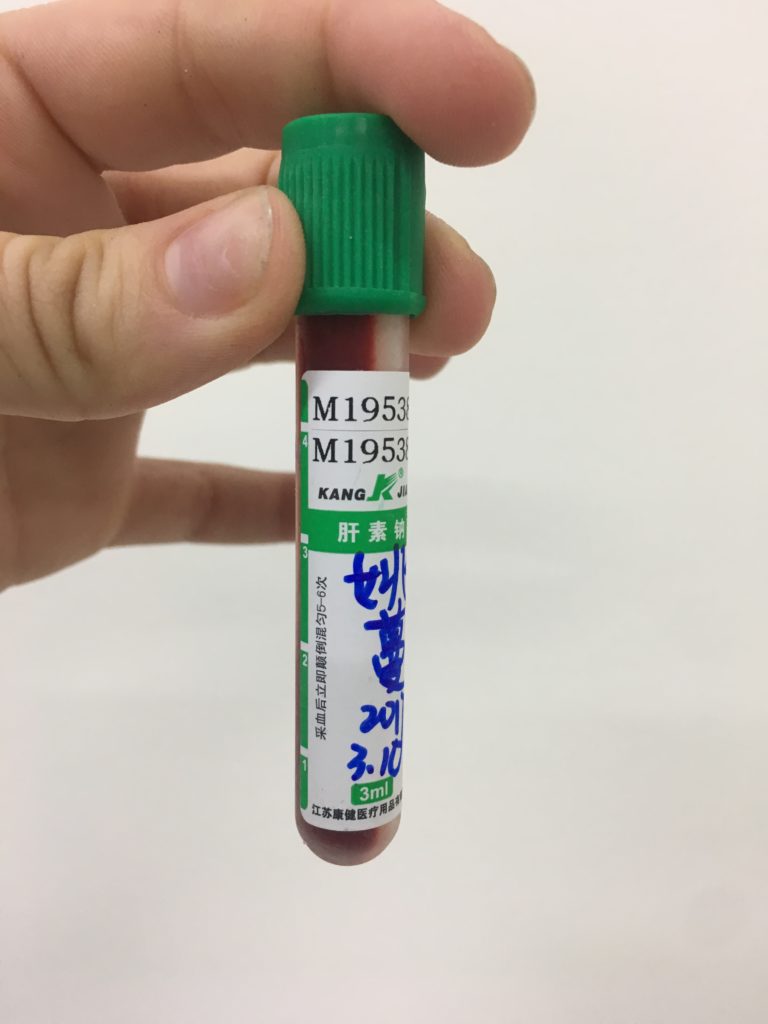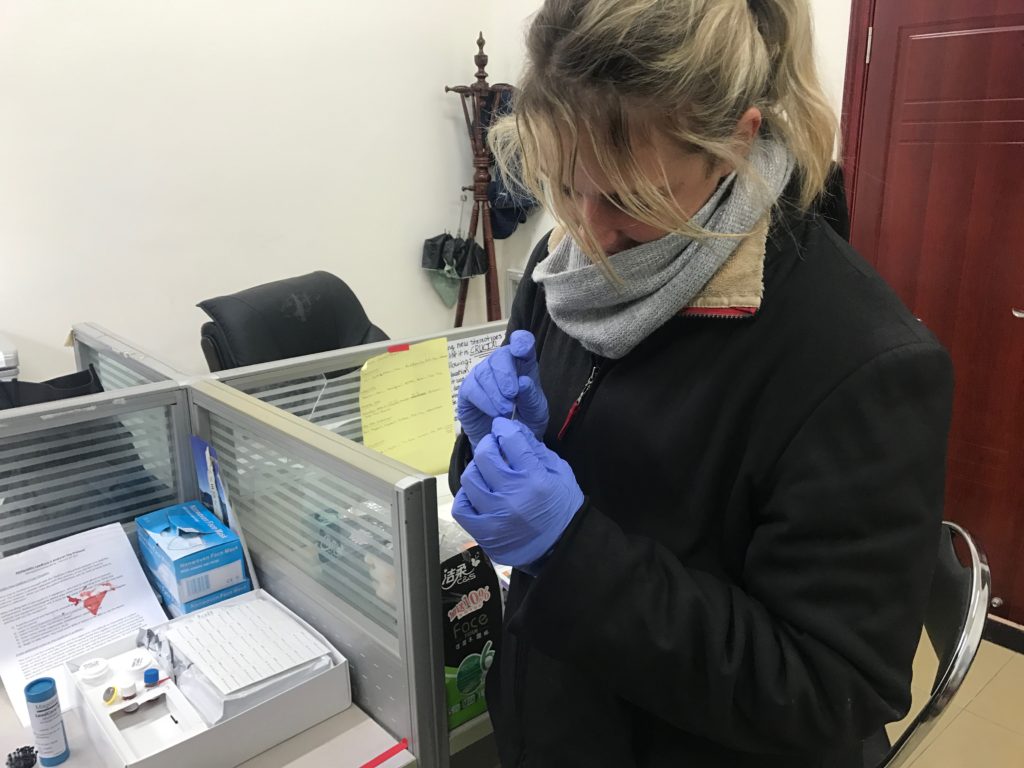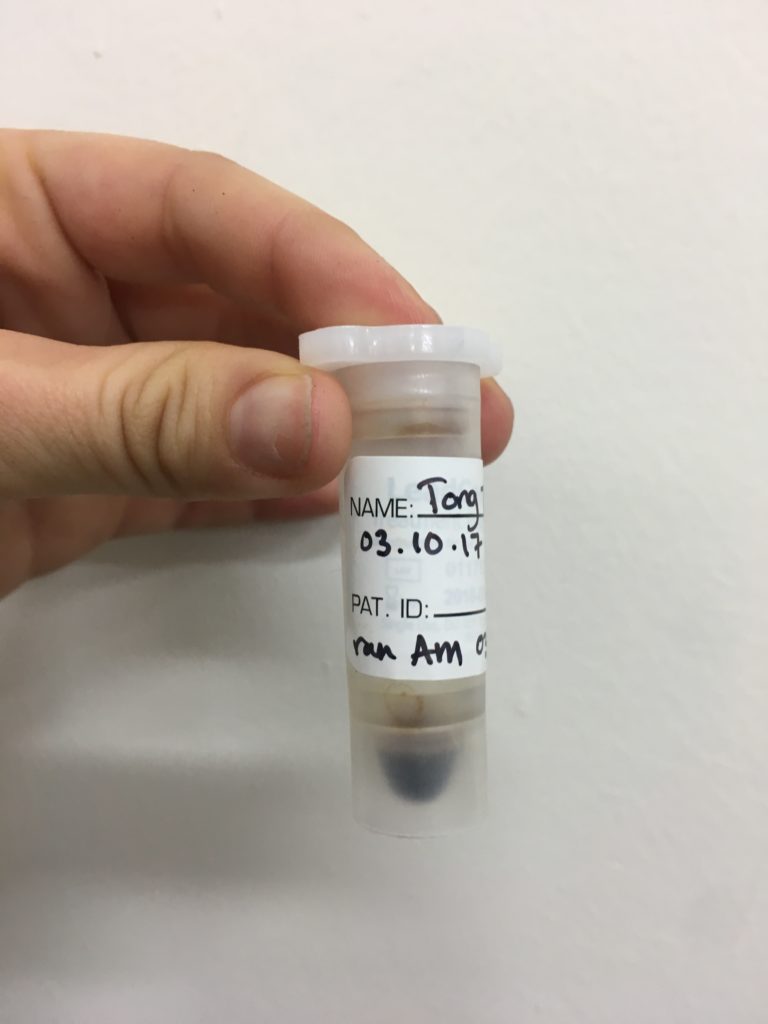
Winter 2017 Interns
The 2017 Winter Interns have been off to a fast start. We dove straight into the breeding season on our first day. We have been recording the female’s behaviors when their estrus levels begin to peak, the male’s behaviors after male-male competition, and collecting fecal samples from the male’s to analyze their hormone levels.

Lead Care II Blood Analyzer generously donated by Magellan Diagnostics
But, this year is the first year we have been able to analyze the panda’s blood at Bifengxia for lead. We were lucky enough to have an at home LeadCare II machine donated by Magellan Diagnostics so we can have lead results immediately. The LeadCare II machine is primarily used at home to detect unsafe lead levels in the blood of children, pregnant women, and adults who work with lead. A blood test is the only way to know if you have been exposed, and with this machine it takes about three minutes from start to finish to obtain results.

The blood sample given to us by the Vet keepers

Pulling the blood into the capillary tube to mix the blood

The sample of Tong Tong’s blood that ran through the analyzer
To begin, the blood is collected by the veterinarian and given to me to be analyzed. Once collected, I draw the whole blood out with a capillary tube to be mixed with treatment reagent. After the blood is mixed a drop is placed onto a sensor where the red blood cells are lysed and the lead becomes available for detection after a three-minute wait. Finally, a percentage of lead in the blood is given. It’s that easy! About 5 minutes from blood collection to finish.
We expect to compile the results by this summer and subsequently publish. Stay tuned for results and make sure to follow our adventures this breeding season!
-Stephanie


Thanks for the update – do you also check for other pollutants with other apparatus? I hear China’s air can be pretty bad at times! I think you are a great looking group and wish you the best of luck! Keep up the good work! I think it is great that Magellan Diagnostics donated the analyzer! Hoping for lots of future posts ands lots of cubs!
Sincerely,
JoAnn Mann
Hi JoAnn,
Great Question! We do check for other pollutants.
We also look at Mercury and Methylmercury which are, similar to lead, byproducts of anthropogenic pollution such as the burning of coal. We are looking at Hg concentrations in bamboo, their hair, feces, and blood. This will give us a whole-body picture of what is going on. These results are expected later this year. Exciting, especially since we’ve been studying Hg since 2011.
Cheers, Nate-
Thank you so much for the response! I look forward to hearing your results! Thank you for all you do for the lovely pandas!
Sincerely,
JoAnn C. Haynes Mann